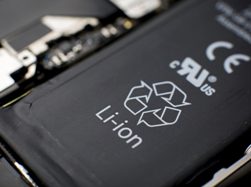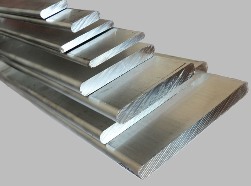 Smartphone and tablet users, of course, are aware of the explosion hazard of lithium batteries in their gadgets. And striking examples do not have to go far. Recently, for example, Samsung faced a painful problem in person, and was forced to withdraw the first series of the new Note 7, since the batteries exploded right in the process of charging. One way or another, the problem remains the same since the advent of cell phones, ICAO even in 2016 banned the commercial shipment of lithium batteries in the cargo compartments of civilian transport.
Smartphone and tablet users, of course, are aware of the explosion hazard of lithium batteries in their gadgets. And striking examples do not have to go far. Recently, for example, Samsung faced a painful problem in person, and was forced to withdraw the first series of the new Note 7, since the batteries exploded right in the process of charging. One way or another, the problem remains the same since the advent of cell phones, ICAO even in 2016 banned the commercial shipment of lithium batteries in the cargo compartments of civilian transport.
The fact is that in the process of charging a lithium battery in a mobile device, using the microcontroller built into the battery, a rather complicated algorithm for implementing this process is implemented so that the battery temperature does not go beyond the acceptable temperature range. The controller monitors battery parameters ...
Resistance of the human body - what it depends on and how it can change
 When a person gets under electric voltage, an electric current begins to flow through his body, and the magnitude of this current depends not only on the magnitude of the applied voltage, but also on the resistance of the human body. Meanwhile, the resistance of the human body is by no means constant; its value depends on many factors: on the state of the person at the moment of contact (mental and physical), on the parameters of the closed circuit, on the external environmental conditions in which the person is at the time of the impact.
When a person gets under electric voltage, an electric current begins to flow through his body, and the magnitude of this current depends not only on the magnitude of the applied voltage, but also on the resistance of the human body. Meanwhile, the resistance of the human body is by no means constant; its value depends on many factors: on the state of the person at the moment of contact (mental and physical), on the parameters of the closed circuit, on the external environmental conditions in which the person is at the time of the impact.
The human body consists of various tissues, and each type of tissue has its own resistance. For example, tendons, skin, adipose tissue, cartilage and bones have a resistivity of the order of 3 to 20 kΩ / m. Blood, muscles, lymph, brain and spinal cord - only from 0.5 to 1 Ohm / m. Of all these tissues, the skin is the most resistant, therefore it is the skin that largely determines the resistance of the human body to electric current ...
Fluorescent lamps - from heyday to sunset
 Luminescent lighting in the form in which we have it today is about 80 years old, although the history of the formation of technology lasted about the same, that is, in general, about 160 years have taken the path of technology of fluorescent lamps.
Luminescent lighting in the form in which we have it today is about 80 years old, although the history of the formation of technology lasted about the same, that is, in general, about 160 years have taken the path of technology of fluorescent lamps.
Before a fluorescent lamp appeared in every house, before fluorescent lamps appeared in street lighting, before fluorescent lamps appeared in offices, engineers and scientists went a long way from inventing a vacuum tube, through experiments with glowing inert gases under high voltage, to developing integral technology with reliable and high-quality fluorescent coating of luminous tubes and a suitable power supply circuit for fluorescent lamps. The first gas discharge lamp (in the form of an experimental setup) will be released in 1856, and this will be a Geisler tube. The German glassblower Heinrich Geisler was distinguished by his inventive talent, and thanks to the vacuum pump...
 What is common between a rusty nail, a rusted bridge or a leaking iron fence? Why do iron structures and iron products rust in general? What is rust per se? We will try to give answers to these questions in our article. Consider the causes of rusting of metals and methods of protection against this harmful natural phenomenon.
What is common between a rusty nail, a rusted bridge or a leaking iron fence? Why do iron structures and iron products rust in general? What is rust per se? We will try to give answers to these questions in our article. Consider the causes of rusting of metals and methods of protection against this harmful natural phenomenon.
It all starts with metal mining. Not only iron, but also, for example, aluminum and magnesium, is mined initially in the form of ore. Aluminum, manganese, iron, magnesium ores do not contain pure metals, but their chemical compounds: carbonates, oxides, sulfides, hydroxides. These are chemical compounds of metals with carbon, oxygen, sulfur, water, etc.Pure metals in nature once, twice and miscalculated - platinum, gold, silver - noble metals - they occur in the form of metals in a free state, and do not tend to form ...
Aluminum is more expensive than gold
 Did you know that the possession of any aluminum product, such as a profile, a sleeve, a spoon or an element of accessories, in the 19th century would already have made you quite a wealthy person? Today, of course, it is well known that aluminum is very common around the world, but before it was valued more than gold. But the thing is that there is no aluminum in pure metal form in the earth’s crust, although in the form of chemical compounds it makes up almost 8% of the earth’s crust.
Did you know that the possession of any aluminum product, such as a profile, a sleeve, a spoon or an element of accessories, in the 19th century would already have made you quite a wealthy person? Today, of course, it is well known that aluminum is very common around the world, but before it was valued more than gold. But the thing is that there is no aluminum in pure metal form in the earth’s crust, although in the form of chemical compounds it makes up almost 8% of the earth’s crust.
In ancient times, double aluminum salts (then they were not called so) - alum - were widely used to solve various problems, although aluminum was not discussed as such. The trivalent metal present in the salts allowed the use of alum for various purposes, and even today alum is used in antibacterial soap, in after-shave lotions, in baking powder. Aluminum potassium alum has been widely used ...
Recovery of electric energy and its use
 The traditional way to get rid of excess energy released in frequency converters during braking of asynchronous motors controlled by them was to dissipate it in the form of heat on resistors. Braking resistors were used wherever there was a high inertia of the load, for example, in centrifuges, on electric vehicles, on load stands, etc.
The traditional way to get rid of excess energy released in frequency converters during braking of asynchronous motors controlled by them was to dissipate it in the form of heat on resistors. Braking resistors were used wherever there was a high inertia of the load, for example, in centrifuges, on electric vehicles, on load stands, etc.
Such a solution was necessary in order to limit the maximum voltage at the terminals of the converters in braking mode. Otherwise, the frequency converters would fail, because it would be impossible to control the parameters of acceleration and braking. Braking resistors did not burden the equipment economically, but some inconveniences invariably entailed. Resistors are dimensional, they are very hot, they need protection against moisture and dust. And all this is connected only with what needs to be dispelled ...
 Back in 1836, the English physicist and inventor Michael Faraday created a special device for shielding equipment from electromagnetic radiation. This device is relevant to this day, and, as before, bears the name of a scientist. It's about the Faraday cage. This device is a protective cage made of highly conductive metal, and, as a rule, grounded. The principle of operation of this simple device is also quite simple.
Back in 1836, the English physicist and inventor Michael Faraday created a special device for shielding equipment from electromagnetic radiation. This device is relevant to this day, and, as before, bears the name of a scientist. It's about the Faraday cage. This device is a protective cage made of highly conductive metal, and, as a rule, grounded. The principle of operation of this simple device is also quite simple.
When an external electric field acts on the cell, the free electrons of the metal of the cell come into motion, and the opposite sides of the structure are charged so that their field compensates for the external electric field. This can be verified by a simple experiment with two electroscopes and a Faraday cage charged from a high voltage source ...
Why the frequency standard of 50 hertz is chosen in the electric power industry
 Why to this day in the energy industry for the transmission and distribution of electricity everywhere have the frequencies of 50 and 60 Hz been selected and remain accepted? Have you ever thought about this? But this is not at all accidental. In the countries of Europe and the CIS, the standard 220-240 volts of 50 hertz is adopted, in the North American countries and in the USA - 110-120 volts of 60 Hz, and in Brazil 120, 127 and 220 volts of 60 Hz. By the way, directly in the USA, at times, say, 57 or 54 Hz can sometimes appear in the outlet. Where do these numbers come from?
Why to this day in the energy industry for the transmission and distribution of electricity everywhere have the frequencies of 50 and 60 Hz been selected and remain accepted? Have you ever thought about this? But this is not at all accidental. In the countries of Europe and the CIS, the standard 220-240 volts of 50 hertz is adopted, in the North American countries and in the USA - 110-120 volts of 60 Hz, and in Brazil 120, 127 and 220 volts of 60 Hz. By the way, directly in the USA, at times, say, 57 or 54 Hz can sometimes appear in the outlet. Where do these numbers come from?
Let's turn to the story to understand this topic. In the second half of the 20th century, scientists from many countries of the world actively studied electricity and searched for its practical application. Thomas Edison invented his first light bulb, thereby introducing electric lighting. The first DC power plants were built. The beginning of electrification in the USA ...
